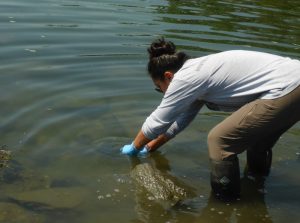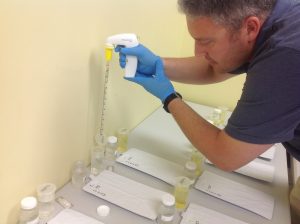Since 2013, Save the Sound has run a seasonal water quality monitoring program to measure bacteria levels at beaches, shorelines, streams, and rivers in western Long Island Sound. We now have 60+ monitoring sites in Westchester County and Little Neck Bay, NY, and in Greenwich, CT. The data we collect helps us to identify and eliminate sources of fecal contamination, drive investment in wastewater infrastructure repairs, and engage local residents and their elected officials in combating this persistent and hazardous form of water pollution.
Collection of water samples is conducted by a corps of trained volunteers. Save the Sound staff and these community scientists visit each monitoring site once a week from mid-June through Labor Day. Save the Sound then processes those samples in our lab and publishes the results on this website and a variety of public forums. View the most current data by clicking the links on the right or join our Community Science Corps.
What We Test For
The primary pollution that health authorities test for when determining whether or not water is safe for human contact is fecal bacteria. Human and animal waste contains disease-causing bacteria (pathogens) that pose a threat to public health.
In order to measure the level of fecal bacteria in the water, Save the Sound tests for Enterococci, the bacteria that the EPA recommends for testing beach water quality and making determinations on when to close or open beaches.

Our Sampling Protocol
Our staff trains and supervises volunteers in the proper procedures for collecting water quality samples. Most samples are collected from the shoreline or by wading into a waterway; some are collected by boat. Join our water quality monitoring Community Science Corps.
We sample in both wet and dry weather and record precipitation data from nearby weather stations, to help determine whether a given pollution hotspot is worsened by rainfall or polluted in all conditions.

Save the Sound defines wet weather samples as those collected when there is a half-inch or greater of cumulative rainfall on the day of sampling and three days prior. Wet weather samples are marked in blue on the data spreadsheets.
Save the Sound staff and trained volunteers analyze the samples at the John and Daria Barry Foundation Water Quality Lab in our Larchmont office, following the methods detailed in our Quality Assurance Project Plan and using equipment provided through an EPA loan program. EPA has provided training and reviewed our protocols and quality control standards to ensure our findings are accurate and reliable.
